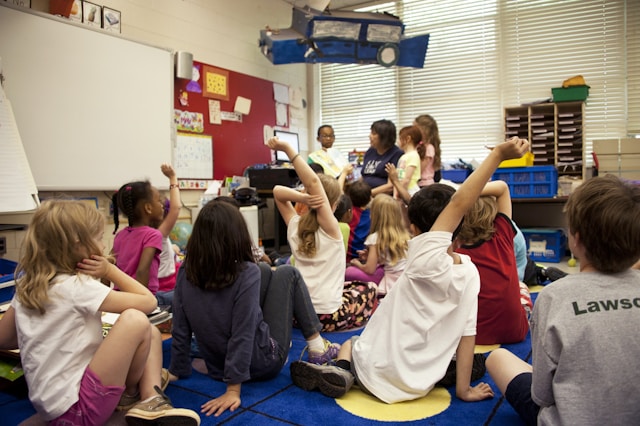The Benefits of Group Therapy for Children & How to Choose the Right One

Individual therapy is an excellent resource for children who need assistance with managing anxiety, mood disorders, and processing emotions. It helps them navigate various stressors such as grief, social issues, and low self-esteem, ultimately aiming to improve their overall mood.
Group therapy provides therapists with the opportunity to observe how children interact with one another in a group setting. It is especially beneficial for kids struggling with social anxiety, poor social skills, or inattentiveness, as it allows the therapist to address these issues in real time with peer interactions. Group therapy also offers a support system for children dealing with grief, bullying, anxiety, depression, and other mental health challenges.
In this post, we will discuss some of the benefits of group therapy for children and how to choose the right one.
What is Group Therapy for Children?
Group therapy involves a therapist working with a small, select group of clients to address specific issues such as anxiety, depression, or eating disorders. Other groups may focus on enhancing social skills or helping clients manage challenges like low self-esteem, emotional regulation, shyness, or recent loss.
This format allows therapists to observe and guide how children interact with one another in a group setting. For children struggling with social anxiety, poor social skills, or inattentiveness, the group environment provides real-time opportunities for therapists to help them navigate these obstacles alongside their peers.
Groups may have a set number of sessions or be ongoing. They can be open, allowing participants to join or leave as needed, or closed, where the group remains consistent throughout the sessions. Besides offering support, group therapy is designed to teach and reinforce effective strategies for managing specific problems.
Benefits of Group Therapy for Children
1. Opportunity to Develop Relationships
Children have the chance to build relationships with their peers through repeated group interactions.
2. Practice Learning Social Skills and Boundaries
Group therapy allows children to practice starting conversations, taking turns, following instructions, and sharing. The goal is for them to carry these social skills into their everyday lives.
3. Imitating Real World Situations
Group therapy sessions mimic real-world scenarios, such as attending a friend’s birthday party, being in a classroom, or visiting a friend’s house.
4. Realizing They’re Not Alone
Seeing and meeting other children facing similar challenges helps children understand they are not alone in their struggles.
5. A Chance to Encourage Their Friends
In a group setting, children may notice mistakes in another child’s actions or speech, helping them recognize their issues. This mutual recognition fosters self-correction and encourages support among peers experiencing similar challenges.
6. A Relaxing Learning Environment with Peers
Working on new skills with peers of the same age makes children feel more open to learning, calmer, and more relaxed than when interacting solely with adults.
7. A Chance to Make Progress One Step at a Time
Group occupational therapy sessions provide a foundation for children to make progress, gradually overcoming challenges that have impeded their learning.
8. Having Fun Playing with Friends
Participating in activities and games with friends is simply fun, offering a positive and enjoyable experience for children.
Types of Group Therapy
Group therapy comes in various forms to address different issues. Typically, a small group of children facing similar stressors are placed together, with groups usually consisting of about 8 to 10 participants, depending on the group’s focus. While some groups are organized by gender, many are centred around specific issues such as social skills or anxiety. Examples of group therapy include:
1. Process Groups: These groups provide a safe and supportive environment for children to work through psychosocial stressors. Examples include grief groups, social groups for addressing bullying, eating disorder groups, play therapy groups, and empowerment groups. Process group therapy helps children learn to trust others, share experiences they might otherwise keep bottled up, and offer and receive supportive feedback from peers.
2. Social Skills Groups: These groups focus on skill-building exercises and practice with age-appropriate peers, typically aimed at developing social skills in younger children, approximately ages two to eight. Sessions often involve role-playing to help children understand how to start conversations and use appropriate body language.
3. Dialectical Behavior Therapy (DBT): This approach combines individual psychotherapy with group skills training classes to help children learn and implement new strategies for improving emotional functioning. Skills taught in DBT include mindfulness, emotion regulation, distress tolerance, and interpersonal effectiveness. Originating from cognitive behavioural therapy (CBT), DBT was initially developed to assist individuals with borderline personality disorder (BPD).
4. Cognitive Behavioral Therapy (CBT) Groups: These groups help children identify and correct inaccurate thinking patterns that reinforce negative behaviours, generally focusing on specific issues. CBT groups are particularly effective for addressing anxiety disorders. Learn more about CBT here.
How Do I Find a Group for My Child?
To find a suitable group for your child, consider the following steps or ask your child psychologist which would suit him:
1. Types of Groups: Some groups are open and ongoing, allowing children to join at any time, while others are closed with specific start and end dates.
2. School Resources: A school counsellor is an excellent resource for information on local group therapy options.
3. Medical Referrals: It’s also beneficial to consult with your primary care physician for recommendations and referrals.
Pairing group therapy with individual therapy can be an effective approach to addressing specific interpersonal issues. Group therapy offers additional social support and skills training to meet your child’s social-emotional needs.




